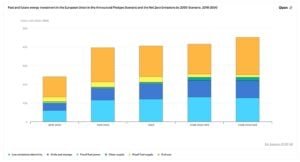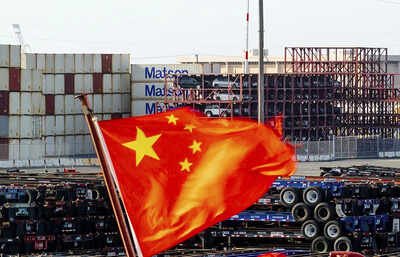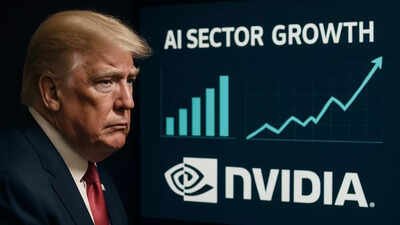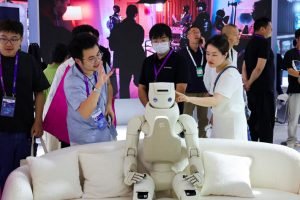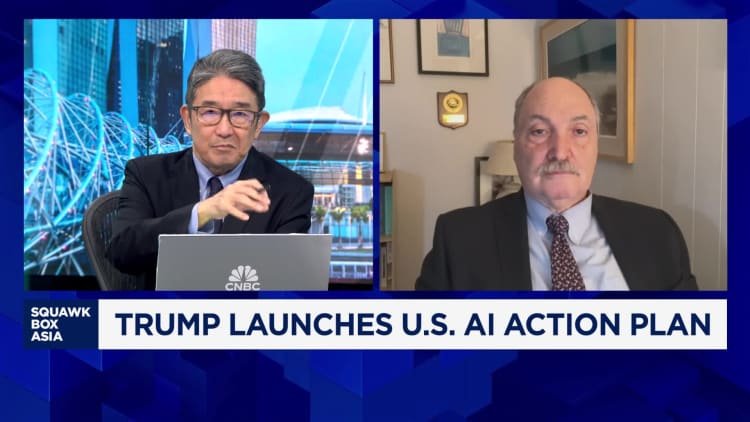U.S. President Donald Trump’s onslaught of tariffs has given Vietnam an opportunity to stake its claim in the global semiconductor chip race.
Vietnamese companies that manufacture chip components — such as circuit boards and wafers — have had a surge in demand as clients place orders before the tariffs kick in and Washington steps up pressure to reduce its reliance on Chinese products.
Fab-9, which manufactures circuit boards for chips at a facility in Ho Chi Minh City, saw a 20% increase in orders the week after Trump threatened China with a 145% tariff hike in April, the company’s president, Bert Arucan, told Rest of World.
“We’ve become very busy,” Arucan said during a meeting in May. “We conference all over the world. Yesterday we conferenced with Italy, and we presented our product, and they don’t believe that we do this in Vietnam.”

Fab-9 is now expanding to a second building to install new equipment and scale up production to meet the rising demand.
“This is a huge opportunity for us to break into the [semiconductor] supply chain,” Phuc Le, director of Da Nang Semiconductor and AI Center, a government-run institution to boost Vietnam’s chipmaking and artificial intelligence capabilities, told Rest of World. “In the long run, this is necessary because we need to take ownership of the supply chain. We can’t just import components for assembly.”
While China and Taiwan dominate the world’s semiconductor assembly, packaging, and testing, Vietnam is home to the factories of several large chip makers including Intel, Amkor, Onsemi, and Hana Micron. In September last year, Vietnam announced a National Semiconductor Strategy, under which it hopes to build one domestic fabrication facility, 100 chip design companies, and 10 packaging plants by 2030.
Vietnamese engineers who have worked at major semiconductor firms overseas are now bringing that expertise home.
A group of professionals who worked at global companies including Soitec, a French manufacturer of semiconductor materials; Synopsys; TSMC; and Samsung are joining a tech firm called VSAP Lab. The firm is investing in a $72-million advanced semiconductor packaging lab in the coastal city of Da Nang. The lab is designed to produce 10 million products per year. It will also offer high-end semiconductor packaging and testing services.
“It will be the first lab in Vietnam where Vietnamese own the tech,” said Phuc from the Da Nang Semiconductor and AI Center.
Viettel, the state-owned military tech conglomerate, is pursuing a similar goal — part of a broader state-led effort to reposition Vietnam as a high-tech manufacturing hub rather than a low-cost site for assembly and testing.
The U.S.-China trade tensions that started in 2018 led many Chinese electronic firms to shed their links to their home country, with several relocating to Vietnam.
In April, when Trump announced a global reciprocal tariff regime, Vietnam faced one of the highest rates in the world on U.S.-bound exports. This month, however, Trump announced a reduction in the proposed tariff rates for Vietnam, following similar negotiations with the U.K. and China, offering some relief to exporters. This has not yet been officially confirmed by Vietnam.
Trump had originally imposed a 46% tariff on Vietnamese exports to the U.S., which he said had been reduced to 20%. A higher rate of 40% has been proposed for items that were transshipped, or which simply passed through Vietnam rather than being manufactured or assembled there. The tariffs are expected to come into effect on August 1.

The Trump administration has previously accused Vietnam of concealing Chinese trade to the U.S. by transshipping goods from the country. The White House has yet to clarify what types of export violations would count as transshipments.
Hoang Long Chau, CEO of Vietnam Wafer, the country’s only supplier of wafers for the semiconductor industry, told Rest of World his year-old company doesn’t rely on China, and can accommodate demands for items that do not have any Chinese footprint.
“Our wafers are 100% made here with no Chinese components, all materials are Vietnamese. … We’d be happy to explain our steps and strategy to the U.S. Department of Commerce,” Long said.
Hai Tran, chairperson of HSPTek, a Vietnamese firm that has designed chip modules since 2023, told Rest of World his company has multiple options to scale up production to meet higher demand. It can outsource orders to heavyweights like Foxconn and Luxshare, which have operations in the country, or work with lesser-known foreign vendors, or Vietnamese manufacturers, “whose facilities and expertise are no worse than FDI companies.”
“They just have a lower scale and have been operating below capacity,” Hai said.
The recent spurt in demand, however, may not help Vietnam significantly.
Malaysia offers a cautionary tale: Despite hosting a semiconductor ecosystem and the factories of chip giants like Intel, Texas Instruments, and Infineon Technologies for over 50 years, the country has yet to build a homegrown semiconductor company of global significance — let alone a fabrication plant of its own, which can cost over $10 billion.
It is very hard for domestic companies to become leaders in research and development, and have access to global markets, according to Christopher Cuong T. Nguyen, the founder of Aitomatic, a Silicon Valley-based company that offers AI solutions in manufacturing.
“To get there, you need to be very consciously planning for it,” Nguyen told Rest of World. Countries need to overhaul incentive structures to support the local startup ecosystem and attract skilled talent, he said.
Vietnam is undergoing major administrative reforms that have put tech, research and development, and the private sector at the center of its new growth strategy. In June, the country announced its first free trade zone in the coastal city of Da Nang, which has become a hot tech destination housing 23 chip-design companies. In 2023, this number was just nine. The free trade zone aims to attract foreign capital to build high-tech manufacturing and logistics sectors.

Other provinces are also emerging as key nodes for the country’s chipmaking ambitions. Vietnam Wafer is expanding and repurposing a sand processing factory in the Quang Tri province to make ultrapure quartz for wafers. The Hanoi-based FPT — Vietnam’s biggest private tech company — and CT Semiconductor in Ho Chi Minh City are simultaneously building the first Vietnamese-owned assembly, testing, and packaging facilities.
The buzz has Arucan excited. “It’s like Silicon Valley maybe 55, 60 years ago,” he said.



